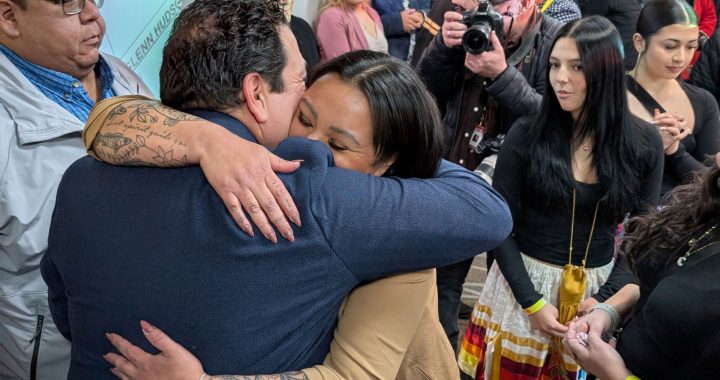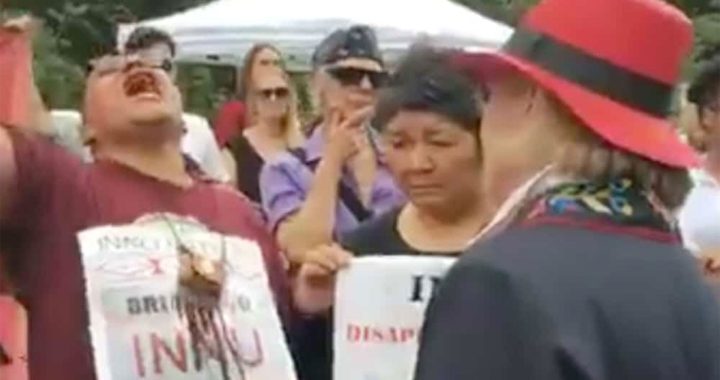The federal committee on the Status of Women is setting a deadline of 2025 for the government to close the gulf between the rates of incarceration between Indigenous and non-Indigenous women.
Indigenous women represent five percent of the overall population in Canada but make-up nearly 38 per cent of federal prisoners.
“It is ambitious. In my opinion, it’s something we have to do,” said committee vice-chair and Liberal member of Parliament Pam Damoff.
She made the statement at a news conference Tuesday with four other Liberal MPs who also sit on the same committee.
“If we implement all the recommendations in this report, I have a hope that the vast majority of people who are incarcerated today will never be incarcerated again,” said Liberal MP Sean Fraser.
Starting last November the committee held nine meetings and heard from 58 witnesses.
On Tuesday it released a 200-page report containing 96 recommendations.
Recommendation five is the one that commits “to eliminating the over-representation of Aboriginal people [and youth] in custody by 2025.”
The other 95 recommendations run over a wide range of fixing the social ills that lead women to be imprisoned, working with the provinces and Indigenous communities to reduce the number of children in child welfare, to better access to legal representation, to better delivery of mental health, and to establishing community courts in communities.
The committee says the federal government needs to increase funding to meet many of these goals.
“It’s a strong message to the government we need to be making these investments,” said Damoff.
At the same time, Fraser said many of the solutions are already in Indigenous communities and won’t cost the government a dime to implement.
“Having access to an elder from within the community is something that is not going to make the process greatly more expensive,” he said. “But it’s going to significantly improve the social outcomes.”
Damoff says getting people proper identification before leaving prison would be inexpensive and help women find housing more easily or get a job.
“That’s something that would be fairly simple to fix,” she said. “But could make a huge difference in terms of that person whether they end up falling into a life of crime or homelessness with no other options.”
Of interest is recommendation 31.
It calls for the end of mandatory sentencing, something that was left out of Bill C-75, which was introduced by Justice Minister Jody Wilson-Raybould and is making changes to the Youth Criminal Justice Act, and the Criminal Code.
The committee didn’t want to comment directly on the justice minister’s bill and any other legislation the government has introduced but stressed the importance that it adopt recommendation 31.
“The elimination of mandatory minimum sentences is going to go a long way to help the conditions that Indigenous women in Canada are facing right now,” said Fraser.
In fact just a few weeks ago, Independent Senator Kim Pate introduced her own legislation to do away with mandatory sentencing – Bill S-251.
The recommendations of the report are similar to ones seen in the past, whether it’s Manitoba’s Aboriginal Justice Inquiry, the Royal Commission of Aboriginal Peoples, or the Truth and Reconciliation Commission’s Calls to Action, which the committee’s recommendations reference frequently.
Fraser understands there might be skepticism from yet another report.
“We are not going to undo 150 years of colonial oppression with a single report – but with a few good faith actions we might be able to start to rebuild that trust.”
The committee vows its recommendations will not be done without willing Indigenous partners.
“They’re the ones who are recommending and telling us what they think would work,” said MP Emmanuella Lambropoulos.
The federal government has 180 days to respond to the committee’s recommendations.











I don’t want to post this, just communicate this information to the person who wrote the article.
While I agree that this is a crisis that needs action immediately, I want to point out that the data provided in this article is inaccurate.
The report actually indicates the following: “Despite representing approximately 5% of Canada’s total female population, Indigenous women make up 38% of the federally incarcerated female population in Canada; in Correctional Service Canada’s Pacific and Prairie regions, Indigenous women make up more than 50% of the federally incarcerated female population.”
Your article indicates that Indigenous women represent 5% of the Canadian population, when the 5% is the representation in the female population in Canada and the article indicates they represent 38% of the federal prison population whereas the report indicates 38% of women in federal prisons. Women as a whole actually represent about 7-8% of the federal prison population.
I trust that readers will not be distracted by the inaccuracy in this article and will focus on the very real and pressing problem of the over incarceration of Indigenous women and men.
I don’t want to post this, just communicate this information to the person who wrote the article.
While I agree that this is a crisis that needs action immediately, I want to point out that the data provided in this article is inaccurate.
The report actually indicates the following: “Despite representing approximately 5% of Canada’s total female population, Indigenous women make up 38% of the federally incarcerated female population in Canada; in Correctional Service Canada’s Pacific and Prairie regions, Indigenous women make up more than 50% of the federally incarcerated female population.”
Your article indicates that Indigenous women represent 5% of the Canadian population, when the 5% is the representation in the female population in Canada and the article indicates they represent 38% of the federal prison population whereas the report indicates 38% of women in federal prisons. Women as a whole actually represent about 7-8% of the federal prison population.
I trust that readers will not be distracted by the inaccuracy in this article and will focus on the very real and pressing problem of the over incarceration of Indigenous women and men.